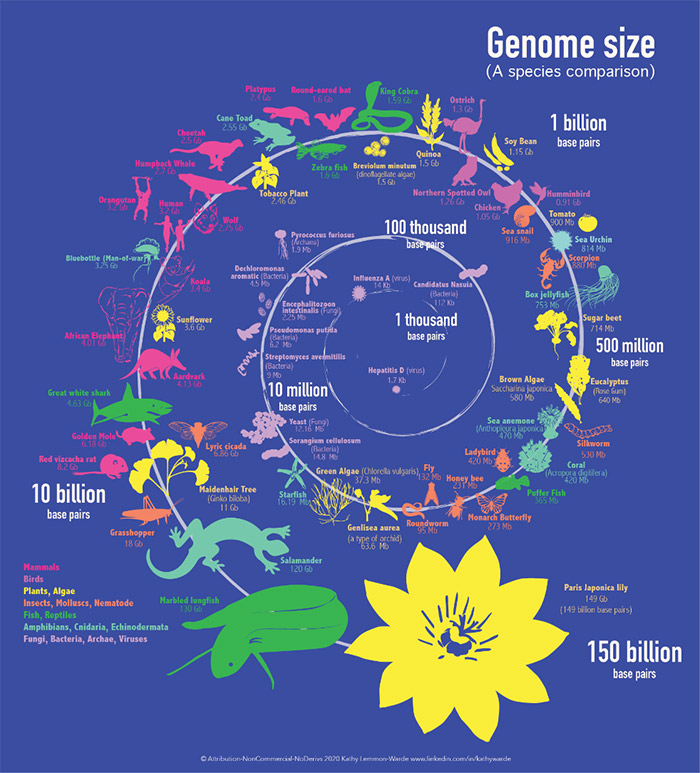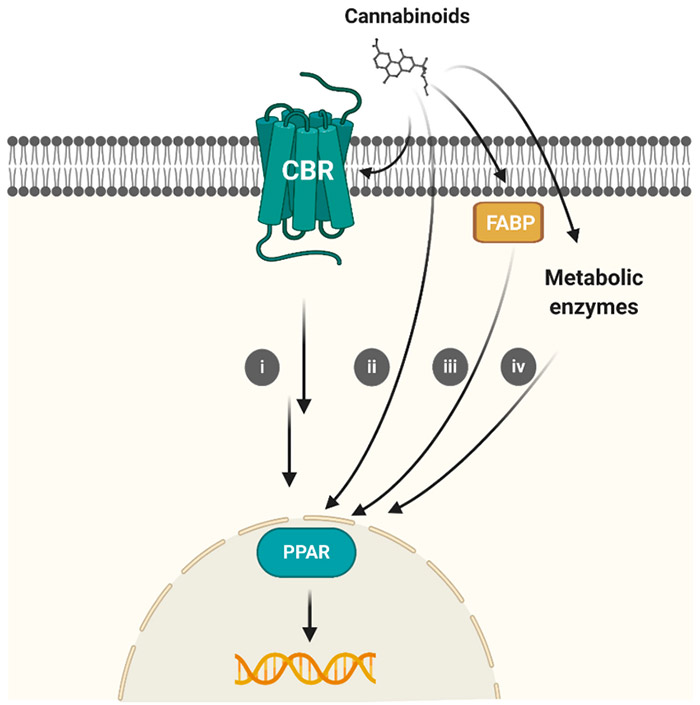By Tanja Bagar

Dr. Tanja Bagar is a microbiologist with a PhD in Biomedicine. She has gained extensive research experience in biotechnology, molecular biology and cell signaling in laboratories in Slovenia, Germany and the UK. Her focus has mainly been on the endocannabinoid system and active substances from cannabis/hemp. Her work led to the formation of the International Institute for Cannabinoids (ICANNA), where she is the CEO and chairman of the Expert Council. She is also the deputy director and head of R&D in an environmental company. She is active in the academic sphere as well. She lectures on microbiology and is the dean of the master’s program of Ecoremediations at the Faculty Alma Mater Europaea.

Cannabidiol (CBD) is one of the most abundant cannabinoids contained in the Cannabis sativa L. plant. In 2018, the World Health Organization published a Critical Review Report, which found across a number of controlled and open label trials that CBD is generally well-tolerated, with a good safety profile, and does not have any potential for abuse.
CBD has a huge spectrum of biological effects, with potential benefits in several conditions such as anxiety, inflammation, neuropathic pain, and neurological conditions. It is currently thought that CBD engages many different targets in the body and its effects are thus thought to be due to multiple molecular mechanisms of action. CBD activates several receptors and modulates many others; it also binds to enzymes and affects their activity. For example, CBD slows down the cytochrome P450 group of enzymes in the liver, and this is why we need to be careful in combining CBD with certain medications, since cytochrome P450 is responsible for eliminating many drugs from our body. Given this broad interaction with receptors, enzymes, ion channels, and transporters, it's safe to say that CBD has around or over 100 molecular targets in our body. Currently, the clinical efficacy of CBD is not completely understood. Evidence derived from randomized clinical trials, in vitro and in vivo models, and real‐world clinical observations support the use of CBD in many conditions and clinical situations. In clinical practice we often see benefits in patients beyond a better clinical outcome: this is due to this extensive network of interactions.
Human beings possess an extraordinary genetic architecture, with an estimated 20,000 to 25,000 genes encoded within our DNA. This is where all the information about each of us is stored. Every cell carries information about the whole organism. Remarkably, despite the vast complexity of human physiology, the number of genes we possess is comparable to—and sometimes smaller than—that of other species. For example, the roundworm (Caenorhabditis elegans) has about as many genes as humans (around 20,000) and some plants, like rice (Oryza sativa) have almost twice as many genes as humans – roughly 40,000. Paris japonica, a flowering plant native to Japan, holds the record for the largest confirmed genome, which is about 50 times larger than the human genome.

Gene regulation
While humans obviously do not carry the largest collection of genes, we are considered among the most complex organisms in terms of biochemistry, anatomy, cognition, and behavior. Our complexity arises not from the number of genes we have, but from how those genes are regulated, expressed, and interact within biological networks. We have very complex gene regulation mechanisms, which decide if genes are turned on or off, ensuring that the biological functions happen at the right time and place and with the appropriate intensity. While the number of genes for all mammals may be similar, the differences in gene regulation are key to what makes each species unique. In every cell, only a specific set of genes is active, and gene expression needs to be tightly regulated in response to internal and external signals. The key processes involved in gene regulation include epigenetic modifications (these changes act like switches or dimmers that control whether a gene is active or inactive, without changing the gene itself), transcription factors (proteins that stick to specific parts of DNA to either help or block that gene) and microRNA (small molecules that control gene activity).
Proper gene regulation is crucial for maintaining cellular and overall health. Dysregulated gene expression can lead to various symptoms as well as to uncontrolled cell growth (as in cancer) or cell death, contributing to various array of diseases.
CBD and gene expression
In humans, gene regulation is influenced by various factors, including the environment, diet, as well as plant substances like cannabidiol (CBD). CBD has been shown to affect gene expression by interacting with specific molecular pathways. A critical mechanism through which CBD exerts its effects is through its interaction with a specific receptor, called the peroxisome proliferator-activated receptor gamma (PPARγ). PPARγ is a transcription factor involved in the regulation of glucose metabolism, fatty acid storage, and insulin sensitivity. It also modulates inflammation and oxidative stress responses. When PPARγ is activated, it binds to specific DNA sequences known as PPAR response elements (PPREs), which regulate the transcription of genes involved in these vital biological processes. The role of PPARγ is particularly significant in some of the most prevalent diseases in modern society, like type 2 diabetes, obesity, cancer, and neurodegenerative conditions.

CBD's ability to activate PPARγ was first highlighted in several studies that demonstrated CBD's anti-inflammatory and neuroprotective properties. It was demonstrated that CBD binds to and activates PPARγ, leading to the upregulation of genes that promote anti-inflammatory effects and protect against neuronal damage. This interaction is crucial in diseases such as epilepsy, Alzheimer's, and Parkinson's, where neuroinflammation and oxidative stress contribute to the progression of the disease.
Additionally, PPARγ's activation by CBD has been linked to the suppression of cancer cell proliferation and metastasis. Studies have shown that PPARγ activation can induce cell cycle arrest and apoptosis (programmed cell death) in certain types of cancer cells, suggesting that the anticancer properties of CBD could be working at least in part through this pathway.
Since cannabinoid receptors and PPARs, especially CB2R and PPARγ, have shown to exhibit biological relevance in common pathophysiological conditions, researchers have also been exploring multitargeting strategies, where cannabinoid receptors and PPARγ are targeted simultaneously – the so-called "dual targeting". In the case of CB2R and PPARγ this has emerged as a promising therapeutic strategy due to the complementary roles these receptors play in regulating inflammation, immune responses, and metabolic processes. Such dual targeting of CB2R and PPARγ aims to enhance therapeutic efficacy by modulating both immune and metabolic pathways. This strategy has been investigated in various conditions, including neurodegenerative diseases (like Alzheimer's and Parkinson's), autoimmune diseases (such as multiple sclerosis), and metabolic disorders (like obesity and diabetes). Preclinical studies have shown that combining CB2R and PPARγ activation can provide synergistic benefits, so a combined multitarget approach can be a valuable strategy in some chronic diseases. Below, areas where very promising research has already been done are listed:
- Metabolic syndrome and diabetes 2
Metabolic syndrome and diabetes 2 are becoming very prevalent in modern society, with many new cases every year and younger populations being affected. Using CBD to modulate cannabinoid receptor 2 and targeting PPARγ will influence inflammation as well as glucose metabolism. This can help regulate lipid metabolism, improve insulin sensitivity, and reduce chronic inflammation, potentially offering more balanced therapeutic outcomes than targeting either receptor alone. - Anxiety and PTSD
Cannabidiol has shown significant effects on fear memory consolidation, particularly in relation to reducing fear memory expression and enhancing fear extinction. Research suggests that CBD may help disrupt the reconsolidation of fear memories or enhance the extinction process, both of which are critical in managing conditions like post-traumatic stress disorder (PTSD) and other anxiety disorders. Cannabinoid receptors (CB1 and CB2) and PPARγ are key regulators in the brain's response to fear and anxiety, making them important targets to consider when addressing anxiety and PTSD. - Blood–brain barrier (BBB) permeability following ischemia (such as stroke)
Ischemia often causes BBB breakdown, leading to increased permeability, allowing harmful substances and immune cells to enter the brain, which exacerbates inflammation and neuronal damage. Studies suggest that CBD can stabilize the BBB and reduce its permeability by acting on cannabinoid receptors and PPARγ. This protective effect is partly due to its ability to reduce neuroinflammation and its antioxidant properties, which further contribute to its protective effects. Research shows that CBD is a potential therapeutic agent for conditions where maintaining BBB function is crucial for recovery. - Systemic Sclerosis (Scleroderma)
In autoimmune diseases like systemic sclerosis (SSc), characterized by excessive inflammation, fibrosis, and immune system dysregulation, dual targeting of CB2R and PPARγ could potentially reduce fibrosis and immune hyperactivity. CB2R activation reduces immune cell infiltration and inflammation, while PPARγ helps regulate fibrosis by inhibiting collagen production, which is a hallmark of scleroderma. - Multiple Sclerosis (MS)
In multiple sclerosis, an autoimmune condition in which the immune system attacks the central nervous system, CB2R and PPARγ offer complementary benefits. CB2R activation limits immune-mediated damage, reducing neuroinflammation, while PPARγ modulates microglial activity and neuroinflammation, promoting neuronal protection. Studies have shown that PPARγ agonists reduce demyelination and improve neuroprotection, making this dual-target approach particularly promising for MS. - Alzheimer's Disease (AD)
In Alzheimer's disease, neuroinflammation and oxidative stress play crucial roles in disease progression. Both cannabinoid receptors and PPARγ activation have shown neuroprotective effects. CBD reduces microglial activation and inflammation, while activity at PPARγ helps in managing oxidative stress, promoting amyloid-beta clearance, and improving mitochondrial function, all of which are crucial for slowing AD progression. - Cancer
In cancer, dual targeting of CB2R and PPARγ can inhibit tumor progression through anti-inflammatory, anti-proliferative, and pro-apoptotic mechanisms. Activation of cannabinoid receptor type 2 in cancer cells has been shown to reduce tumor growth by inhibiting proliferation and promoting apoptosis. PPARγ has similar anti-tumor properties, including inhibiting cell growth, reducing metastasis, and inducing cancer cell death. Combined, these pathways could offer a synergistic approach to consider in cancer treatment, especially in cancers associated with chronic inflammation.
Conclusion
CBD's ability to influence gene regulation, particularly through its interaction with PPARγ, opens exciting avenues for therapeutic interventions. The activation of PPARγ by CBD shows promise in the treatment of a wide range of conditions. With new research we are gaining foundations for understanding the molecular mechanisms underlying CBD's ability to modulate gene expression.
As research continues to unfold, CBD's role in gene regulation could lead to new, targeted therapies for complex diseases, offering hope for patients with conditions that have been difficult to treat thus far. However, while preclinical studies are promising, further clinical research is needed to fully understand the potential of CBD and the effects of these changes in the gene expression profile.
It is crucial to establish how CBD's modulation of genes impacts long-term health outcomes, especially in complex multifactorial diseases like cancer, neurodegeneration, and autoimmune disorders. Additionally, the variability in individual responses to CBD, influenced by factors like genetics, dosage, and delivery methods, must be carefully studied to optimize its therapeutic application.
As the science evolves, it will become increasingly clear how CBD can be integrated into personalized approaches to optimize health. CBD does hold the promise to reshape and refine the landscape of medical treatments, but rigorous evidence is needed to translate new molecular insights into patient-focused treatments.
References
Khosropoor S, Alavi MS, Etemad L, Roohbakhsh A. Cannabidiol Goes Nuclear: The Role of PPARγ. Phytomedicine. 2023; DOI: 10.1016/j.phymed.2023.154771.
O'Sullivan SE. An update on PPAR activation by cannabinoids. Br J Pharmacol. 2016 Oct;173(12):1899-910. doi: 10.1111/bph.13497. PMID: 26585190; PMCID: PMC4911841.
Lago-Fernandez A, Zarzo-Arias S, Jagerovic N, Morales P. Relevance of Peroxisome Proliferator Activated Receptors in Multitarget Paradigm Associated with the Endocannabinoid System. International Journal of Molecular Sciences. 2021; 22(3):1001. https://doi.org/10.3390/ijms22031001
Esposito G, Scuderi C, Valenza M, Togna GI, Latina V, De Filippis D, Cipriano M, Carratù MR, Iuvone T, Steardo L. Cannabidiol reduces Aβ-induced neuroinflammation and promotes hippocampal neurogenesis through PPARγ involvement. PLoS One. 2011;6(12). doi: 10.1371/journal.pone.0028668. PMID: 22163051; PMCID: PMC3226620.
Granja AG, Carrillo-Salinas FJ, Pagani A, Gómez-Cañas M, Negri R, Navarrete C, Mecha M, Mestre L, Fiebich BL, Cantarero I, Tolón RM, Hillard CJ, Guaza C. A Cannabidiol (CBD) derivative attenuates experimental autoimmune encephalomyelitis by modulating the PPARγ pathway. Neuropharmacology. 2019 Jan;144:159-169. doi: 10.1016/j.neuropharm.2018.10.026. PMID: 30389361.
Fernández-Ruiz J, Moro MA, Martínez-Orgado J. Cannabinoids in neurodegenerative disorders and stroke/brain trauma: from preclinical models to clinical applications. Neurotherapeutics. 2015 Oct;12(4):793-806. doi: 10.1007/s13311-015-0373-0. PMID: 26347359; PMCID: PMC4633651.
Ramer R, Heinemann K, Merkord J, Rohde H, Salamon A, Linnebacher M, Hinz B. COX-2 and PPAR-γ confer cannabidiol-induced apoptosis of human lung cancer cells. Mol Cancer Ther. 2013 Jan;12(1):69-82. doi: 10.1158/1535-7163.MCT-12-0335. PMID: 23108619.
Patsenker E, Stoll M, Millonig G, Agaimy A, Wissniowski TT, Schneider V, Mueller S, Bartsch B, Brenneisen R, Zimmer A, Stickel F. Cannabinoid receptor type I modulates alcohol-induced liver fibrosis. Hepatology. 2011 Jul;54(1):196-206. doi: 10.1002/hep.24332. PMID: 21538442.


